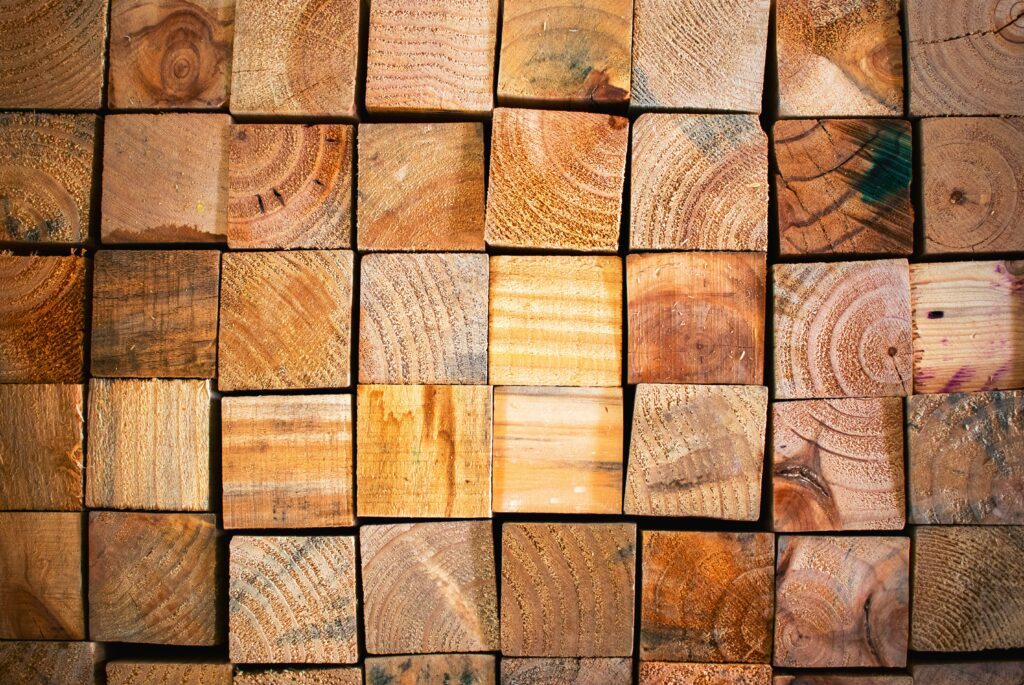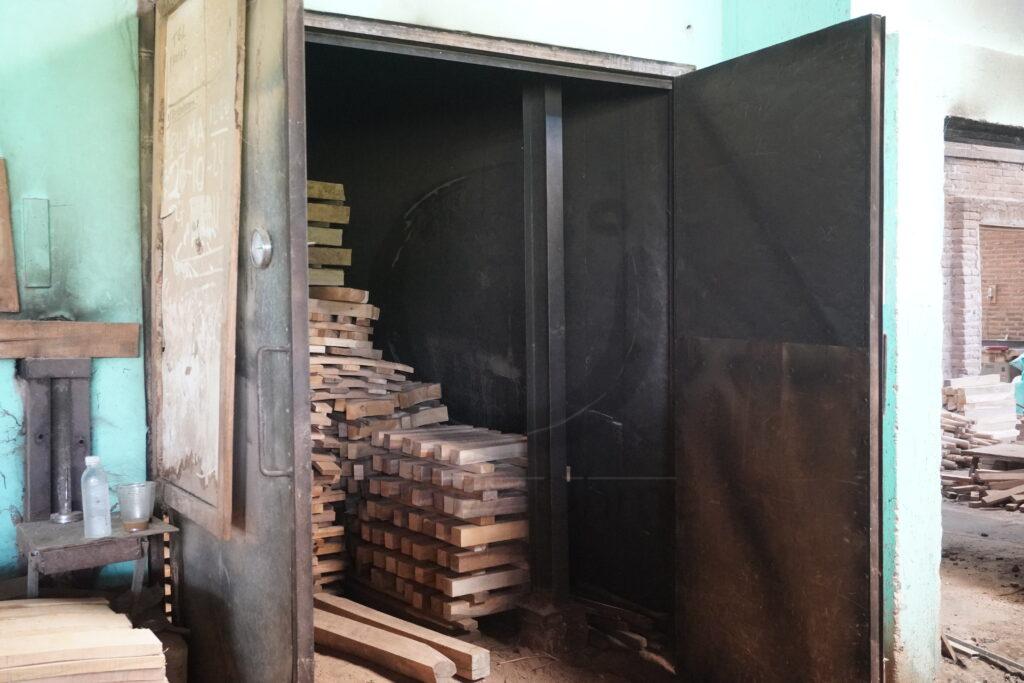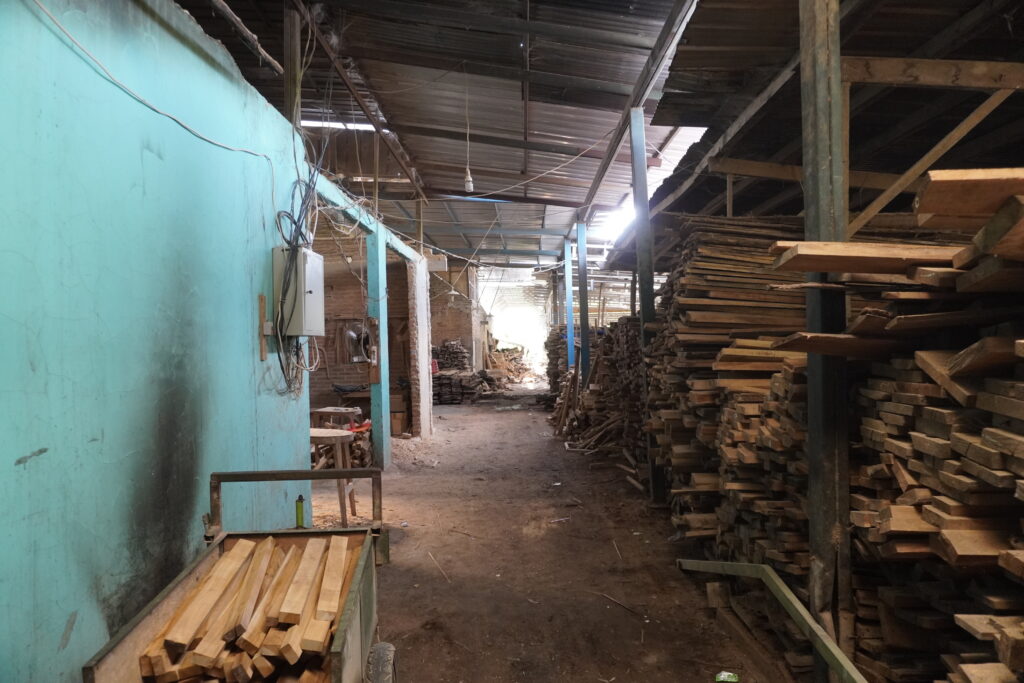WHAT IS KILN DRYING PROCESS? BENEFITS AND USAGE GUIDE
Jodi Martin

Kiln drying is a one of satisfying process in world of wood. Have you ever wondered, when visiting furniture factories or wood-processing facilities, why there is a big oven that can be filled with tons of wood? Has it ever crossed your mind why this wood needs to be in there? You might also notice the peculiar smell when the wood comes out of the oven, and its color becomes browner, brighter, and warmer.
Wood who through process of kiln drying can make a significant difference to any product, especially in its construction and strength. In this article, I’m going to share with you the importance of kiln drying, the uses of kiln-dried wood, the benefits, and how to store kiln-dried products.
KILN DRYING PROCESS
By definition, kiln drying is a process where lumber has been dried from it’s moisture in an extremely controlled environment, like a big oven. As you may imagine, drying big batches of wood is a dangerous and arduous process if not handled carefully.
This process enhances wood stability, prevents warping, and improves its durability for various projects. As a result, kiln-dried wood is necessary so that the wood can withstand changing humidity and temperature. The process carefully controls heating to reduce the wood’s moisture content. With low moisture content, the wood becomes more stable, durable, and suitable for construction, furniture, or even firewood. The various methods of kiln drying will also influence the overall quality and value.
Definition and Process of Kiln Drying
Kiln drying involves placing lumber in a sealed, large chamber called a kiln. Inside the kiln, the temperature, humidity, and airflow are carefully regulated to remove moisture from the wood. The goal is typically to reduce the moisture content to around 6–8%, which is much lower than the natural 15–20% found in freshly cut or air-dried wood.
Compared to natural methods such as sun drying, a kiln oven significantly speeds up drying times. Moreover, the kiln process offers greater precision, killing insects and fungi to further improve the wood’s durability. Although different cycles may vary depending on the species and thickness, the overall principles remain consistent: controlled and accelerated drying.
Types of Kiln Drying
Kiln drying has several methods, each suited for different wood types and purposes. Among the most common methods are conventional kilns, dehumidification kilns, and vacuum kilns.
Conventional Kiln
also known as hot air kilns or batch kilns, use heated air circulated through the wood. This makes them cost-effective but sometimes harsh on delicate species. This type of kiln is the most common in Indonesia, especially in Jepara, Cirebon, Java, and Bali, and is typically used for teak, mahogany, and mango wood.
Why it’s popular: It has a simple setup, is reliable for large quantities of hardwood like teak, and is easy to maintain.
Solar Kiln
Solar Kiln are unique because they use the greenhouse effect—harnessing the power of the sun and ventilation to dry wood more slowly. These kilns are mostly used by small or medium workshops that hold eco-conscious certifications or brands. This eco-friendly and energy-efficient method is becoming increasingly popular in the global market, and it is also gaining traction in modern factories for export-focused furniture companies, particularly in Semarang or Surabaya.
Commonly used for: Sustainable production, smaller batches of softwood, or pre-dried lumber. They are more time-consuming and thus less productive.
Dehumidification Kiln
Recycle warm, moist air while removing water vapor, conserving energy, and reducing drying times. This type of kiln uses refrigeration, making it more precise to control temperature and humidity. This one is also more energy efficient than conventional kilns. Mostly being used because: Higher-end wood like acacia, or sungkai, and export-quality furniture, requiring strict moisture content (mc) control (around 8-12%).
Vacuum Kiln
Use low pressure to lower the boiling point of water, allowing wood to dry quickly at lower temperatures while preserving its color and texture. This type of kiln is less common in factories in Indonesia due to its high cost and maintenance requirements. Instead, it is usually reserved for high-value or thick lumber.
Top choice for: Premium furniture exporters or manufacturers in Java or Bali.
Old ways of kiln drying, Air Power
Air drying is a more natural method compared to kiln drying. This method involves stacking wood outdoors to dry slowly through exposure to air. However, air drying can take months or even years, depending on the wood type and climate. That is why kiln drying clearly outperforms air drying by a wide margin.
IMPORTANCE OF KILN DRYING

Enhanced Stability of Kiln Dried Wood
One of the most visible benefits of kiln drying is its ability to stabilize wood by reducing its moisture content to precise levels. This minimizes wood movement, such as warping, twisting, or shrinking, after installation.
Moreover, kiln-dried wood is easier to cut and shape, especially in projects like furniture or cabinetry. This means the chance of defects during machining, such as splitting or cracking, is much lower. The result is a more reliable and predictable material that holds its dimensions better and improves the overall quality of the finished product.
Pest and Mold Prevention
Insects, larvae, and insect eggs cannot survive heat, and kiln drying exposes wood to temperatures that eliminate them. Most raw lumber contains pests that have a high chance of causing infestations later, which can negatively affect the quality of the wood. Therefore, this aspect is crucial when using wood in construction or furniture, where insect damage could compromise durability.
In addition, kiln drying quickly and thoroughly limits mold growth. Since mold requires moisture to thrive, controlling moisture early in the process effectively prevents fungal decay or growth. This results make wood becomes safer to use and its durability is significantly extended.
Moisture Content Control
Moisture control is fundamental in kiln drying, as it allows us at Natuzz Ohme to adjust specific moisture levels depending on the wood species and intended use. Proper moisture levels reduce the likelihood of defects such as cracking and also improve the wood’s structural integrity.
Moreover, kiln drying achieves an even distribution of moisture throughout the wood, which prevents weak points that could fail under stress. By carefully monitoring and adjusting temperature, airflow, and humidity, the wood dries evenly and efficiently. This is especially important for hardwoods, particularly those from more sensitive species.
Better Finish and Workability of Kiln Drying
Hard to believe, but kiln-dried wood accepts paints, stains, or finishes more evenly than wood with higher moisture. But then again, nobody really paints kiln-dried wood. Why would you want that synthetic color when you can enjoy its natural beauty and authentic touch?
When left unfinished, kiln-dried wood shows no blotching or peeling because the moisture remains consistent. This consistency also enhances the overall aesthetic outcome of projects.
Furthermore, the reduced moisture content makes the wood firmer yet less brittle. As a result, Natuzz Ohme’s collection achieves greater precision in construction, durability, and allows for perfection compared to our initial design sketches.
Optimal Performance
Its consistency in dimensions under all changing conditions makes kiln-dried wood materials fit better in assemblies that require precise accuracy, such as flooring or paneling.
Natuzz Ohme always guarantees that our wood and materials do not experience unexpected swelling or shrinking. Moreover, kiln-dried woods provide peace of mind for our customers when stability is critical.
In conclusion, kiln drying offers greater speed and consistency, producing materials with minimal defects such as warping and splitting. In addition, kilns provide more effective pest control, since the heat eliminates insects and mold that may remain in air-dried wood. On the other hand, kiln drying is more expensive due to the equipment and energy required. Not to mention, it also demands technical knowledge to operate kilns properly, which affects overall cost and accessibility.
APPLICATIONS OF KILN DRYING

Kiln-dried wood is prized for its controlled moisture content and dimensional stability. Consequently, these qualities make it suitable for various applications where precision, durability, and appearance matter most.
Kiln Drying Furniture Manufacturing
Natuzz Ohme heavily relies on kiln-dried wood for manufacturing our furniture. Furthermore, the kiln-dried materials that we use give us assurance to remain sturdy and visually consistent over time.
This drying process also improves the wood’s gluing ability, resulting in stronger joints, which is especially important for items like tables or cabinets, where durability is crucial. Additionally, kiln-dried wood’s consistent moisture level allows us at Natuzz Ohme to finish surfaces more smoothly, contributing to high-quality craftsmanship that lasts over time.
Construction
Kiln-dried wood offers superior dimensional stability and durability. Install it in framing, beams, and trusses to eliminate the risk of shrinking or swelling. Its low moisture content reduces risks of mold and pest damage, which are common concerns with wet lumber. This quality makes kiln-dried wood a more reliable choice for building to ensure long-lasting structures. Furthermore, choosing to use these materials can reduce weight due to drying and also make handling and installation easier on-site.
Flooring
In the same category as construction, flooring using kiln-dried wood is also an excellent option because it maintains its shape and size after installation. Properly dried wood also prevents gaps and cupping caused by moisture changes. Kiln-dried wood is ideal for hardwood floors, mantels, or paneling because it provides a stable base that holds finishes well. As a result, using kiln-dried wood for flooring produces floors that are both durable and visually appealing. Its controlled moisture content also helps preserve the floor’s integrity under daily wear.
CONCLUSIONS
Kiln drying is an essential process that reduces wood’s moisture content in a controlled environment, ensuring greater stability, durability, and resistance to pests and mold. Unlike traditional air-drying, it delivers faster and more precise results, making kiln-dried wood ideal for furniture, construction, and flooring. At Natuzz Ohme, this process allows us to create sustainable, high-quality furniture that lasts for generations.
Reference
Hey there 👋
Need help? Chat with us on WhatsApp!



